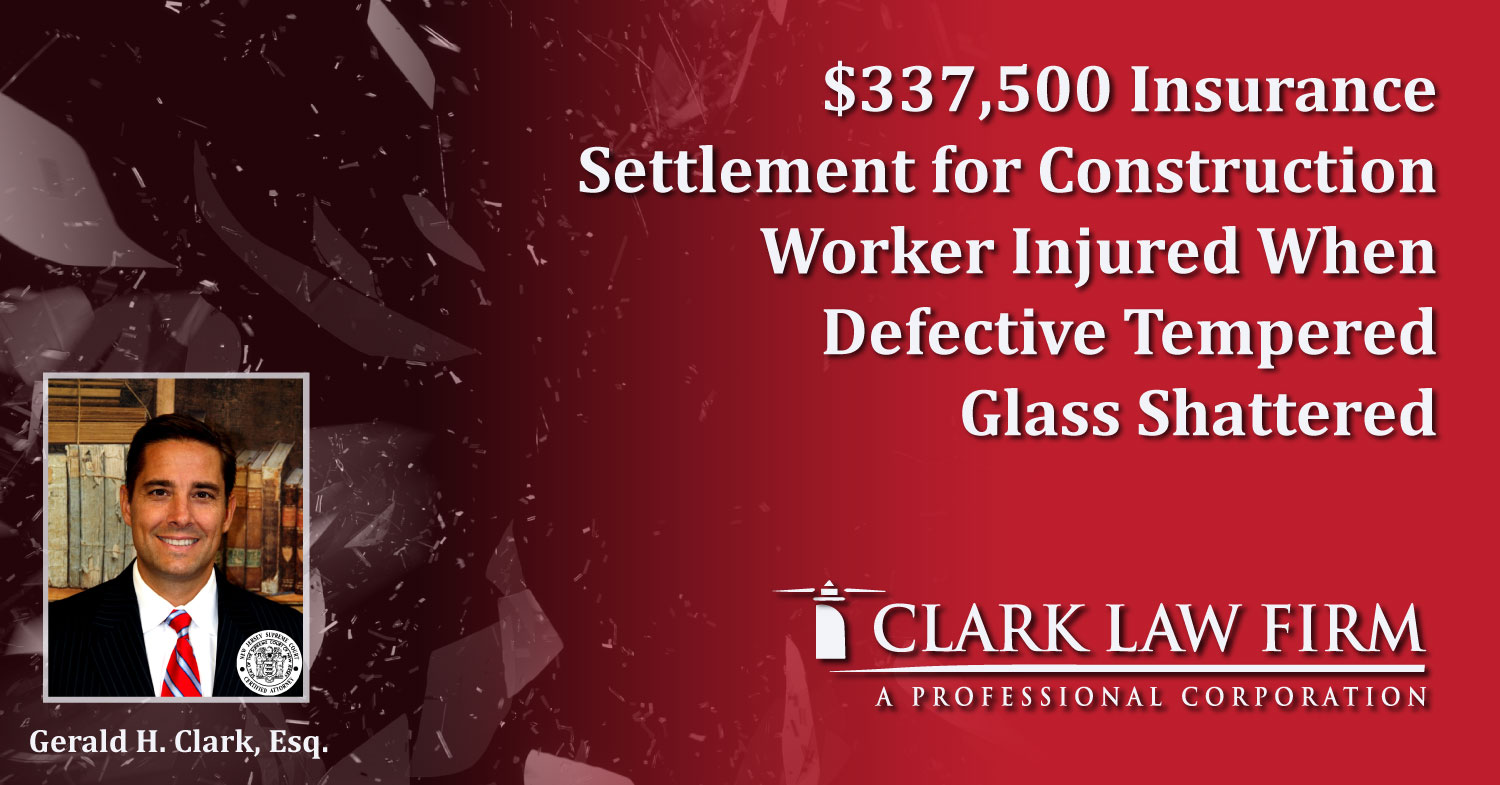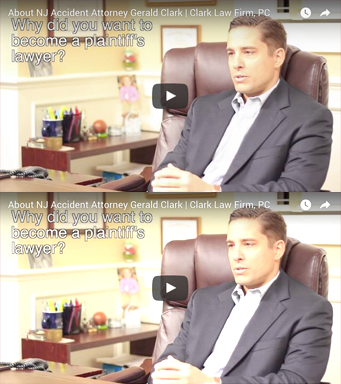$337,500 Insurance Settlement for Construction Worker Injured When Defective Tempered Glass Shattered
This was a products liability case where a construction worker was hurt moving a large tempered plate glass window pane on a dolly. It was being installed as a store front window. All witnesses testified that while it was being moved carefully, with no apparent reason, it just spontaneously shattered. The glass simply exploded. The worker suffered lacerations. Expert witnesses testified this phenomenon of tempered glass exploding suddenly and without warning is termed, “spontaneous breakage.”
Experts for both sides testified unequivocally that anytime a tempered glass window pane spontaneously breaks, it is without exception in and of itself a defect as tempered glass is not designed to spontaneously break. Plaintiff’s expert opines the specific cause of the defect is either an inclusion in the glass, a crack in the edge of the glass, or a mistempering. Defendant’s expert testified the defect is caused by either an inclusion in the glass or a crack in the edge of the glass. Lawyers for the Defendants tried to say the case should be thrown out of court because the glass fragments were not examined. Gerald Clark, attorney for the worker, said New Jersey products liability imposes no such requirement. Since both experts agree that spontaneous breakage is without exception a defect, and there is no question of fact the glass spontaneously broke, Clark argued the worker should be compensated.
This was a products liability case. Generally speaking, in a product liability case, plaintiff is obligated to prove that a manufacturing defect caused an injury to a plaintiff who was a foreseeable user of the product. Michalko v. Cooke Color & Chem. Corp., 91 N.J. 386, 394 (1982). The latter element of proof known as “causation-in-fact is ordinarily an indispensable ingredient of a prima facie case.” Shackil v. Lederle Laboratories, 116 N.J. 155 (1989). A duty is imposed on a manufacturer to ensure that its products as placed into the stream of commerce are suitably safe for their intended uses or reasonably foreseeable uses. Brown v. United States Stove Co., 98 N.J. 155, 165 (1984); Suter, 81 N.J. at 169. If a manufacturer fails to meet that duty, it will be held strictly liable for damages caused by its defective products. Michalko v. Cooke Color & Chem. Corp., 91 N.J. 386, 394 (1982). A defect in a strict liability case can arise from a manufacturing flaw, design defect or inadequate warning. Feldman v. Lederle Labs, 97 N.J. 429, 449 (1984). A manufacturer will be held strictly liable for damages resulting from its product when put to its intended uses or reasonably foreseeable uses. Brown, 98 N.J. at 165.
After the glass spontaneously exploded, the fragments were cleaned up by mall security and discarded. They could not be examined by anyone. Nevertheless, plaintiff’s expert, P. Bruce Adams, was able to conclude in his report, based on the testimony of witnesses as to how the glass broke that the glass was defective. Mr. Adams begins his report by stating the materials he reviewed included the sworn deposition testimony of eyewitnesses. Based on these witnesses, Mr. Adams points out there is no indication the glass broke from being impacted with an object and that it spontaneously broke. He explains that it is well known in the science of glass that anytime tempered flat glass spontaneously breaks, it is due to one of three specific causes: a nickle sulfide inclusion, a crack in the edge or a mistempering. He cites to Tooley, an authority in the field of glass, in support of this conclusion.
In a products liability case the injured plaintiff is not required to prove a specific manufacturer’s defect. Moraca v. Ford Motor Co., 66 N.J. 454, 458, (1975); accord Consalo v. General Motors, 258 N.J.Super. 60, 64 (App.Div. 1992) (explaining that an “inability to prove a defect by direct evidence is not fatal to a plaintiff’s case”); Corcoran v. Sears Roebuck and Co., 312 N.J.Super. 117(App.Div. 1998); Myrlak v. Port Authority, 157 N.J. 84 (1999). Thus, where direct evidence is unavailable, “a plaintiff may prove a defect either by circumstantial evidence which would permit an inference that a dangerous and defective condition existed prior to sale, or by negating other causes in order to make it reasonable to infer that a dangerous condition existed while defendant had control of the product.” Consalo, supra, 258 N.J.Super. at 64 (citing Suter v. San Angelo Foundry & Mach. Co., 81 N.J. 150, 170 (1979)).
Additional circumstantial evidence, such as proof of proper use, handling or operation of the product and the nature of the malfunction, may be enough to satisfy the requirement that something was wrong with it. Scanlon v. General Motors Corp., 65 N.J. 582, 591 (1974). That is, circumstantial evidence, such as proof of proper use, handling, or operation of product and nature of malfunction, may be enough to satisfy the requirement that something was wrong with it. Corcoran v. Sears Roebuck and Co., 312 N.J.Super. 117 (App.Div.1998). In a products liability case, the circumstantial evidence test requires proof sufficient to support a conclusion that, in the normal course of human experience, injury would not have occurred at this point in the product’s life span had there not been a defect attributable to the manufacturer. H.T. Rose Enterprises, Inc. v. Henny Penny Corp., 317 N.J.Super. 477 (A.D.1999).
The phenomenon of tempered flat glass breaking suddenly, without warning or provocation, i.e., “just breaking” is termed, “spontaneous breakage.” Tempered flat glass is not designed to, and is not supposed to, spontaneously break. Therefore, both experts agree that anytime tempered flat glass spontaneously breaks, the glass itself is defective.
After extensive litigation, Attorney Gerald Clark achieved a settlement of $337,500 for this deserving worker. If you have been hurt at work and are looking for a top New Jersey law firm for workers, contact us today.


